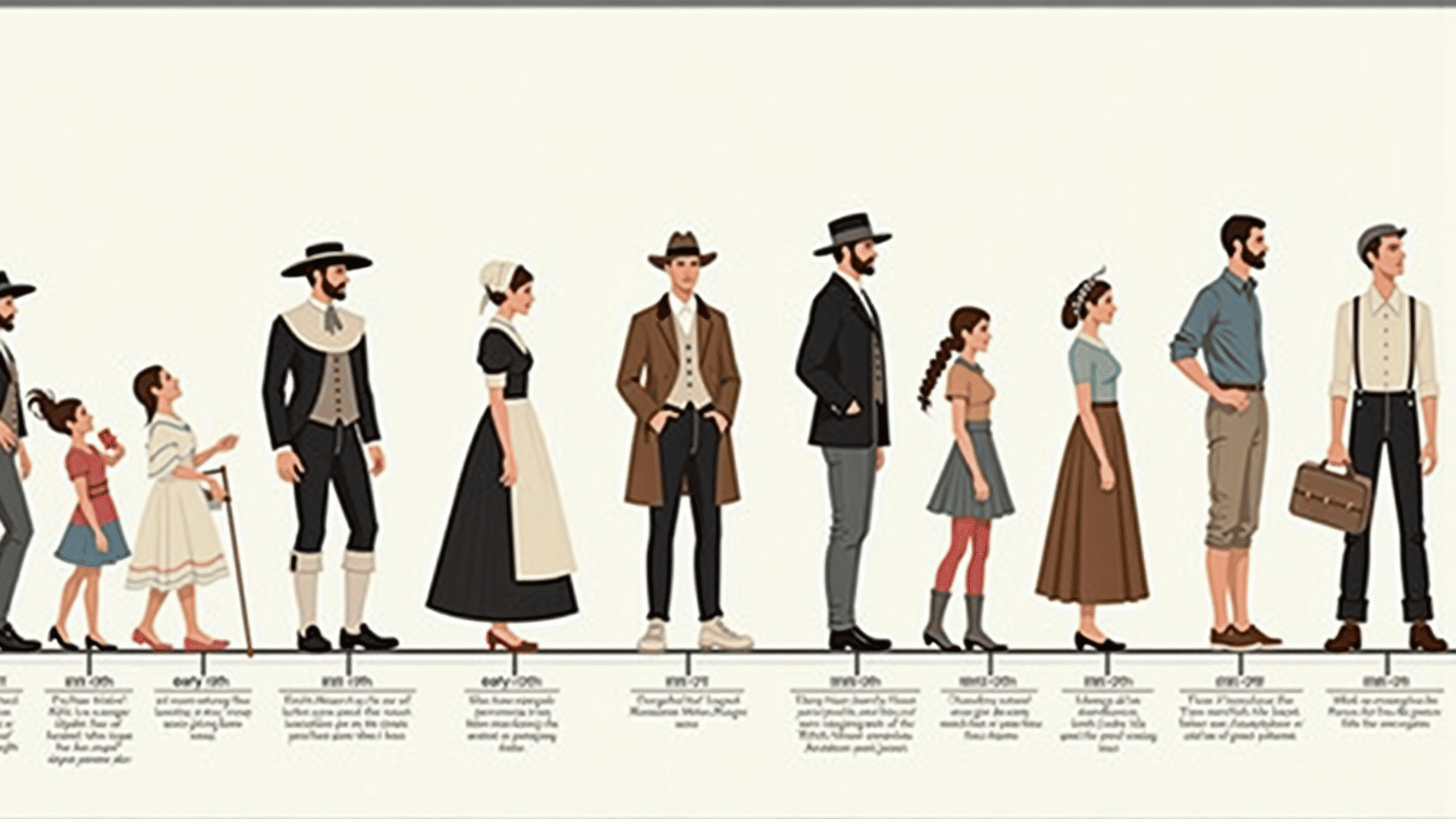The evolution of American style reflects a tapestry of cultural and historical influences that have shaped the nation's unique sartorial journey. From the modest and practical garments worn by the early settlers to the eclectic and diverse styles seen today, American style tells a story of adaptation, innovation, and cultural exchange.
In the early days, the settlers of the New World dressed for survival and practicality. The Pilgrims, for example, donned modest, functional garments made from heavy, durable fabrics. Their clothing was characterized by simple cuts and colors, often in muted tones, reflecting the somber, utilitarian ethos of the time.
As America expanded and diversified throughout the 18th and 19th centuries, the nation's style began to absorb influences from a variety of sources. The Revolutionary War and the formation of a new national identity spurred interest in styles that conveyed freedom and individuality. By the 19th century, the U.S. was importing fabrics and ideas from Europe, while also inventing its own staples, such as denim—a fabric that has become an emblem of American style.
The 20th century marked another profound shift, as American style started to establish a global influence. The flapper dresses of the 1920s, with their liberated, youthful flair, and the sleek Hollywood glamour of the 1930s and 1940s became iconic. The post-war era brought about a cultural revolution, where teenagers emerged as a distinct cultural group. This newfound cultural identity was expressed through rock 'n' roll, rebellious attitudes, and bold styles, again setting a standard that influenced the world.
The latter half of the 20th century saw even greater diversification and democratization of style, driven by various social movements. The 1960s and 1970s brought about styles reflecting counterculture and activism, from tie-dye and bell-bottom jeans to the politically charged fashions inspired by civil rights movements. The 1980s and 1990s adopted a more eclectic and sometimes extravagant mix of styles, reflecting the economic optimism and technological advancements of those decades.
Today, American style is a melting pot of influences and expressions. It ranges from streetwear to haute couture, embracing both high fashion and accessible everyday wear. The digital age and globalization have further blurred lines and introduced a world where anyone can find and express their unique personal style.
As American living continues to evolve, so too does its fashion. While trends may come and go, woven through the fabric of American style is a resilient spirit of diversity, creativity, and individuality—qualities that will continue to drive its evolution in the years to come.
